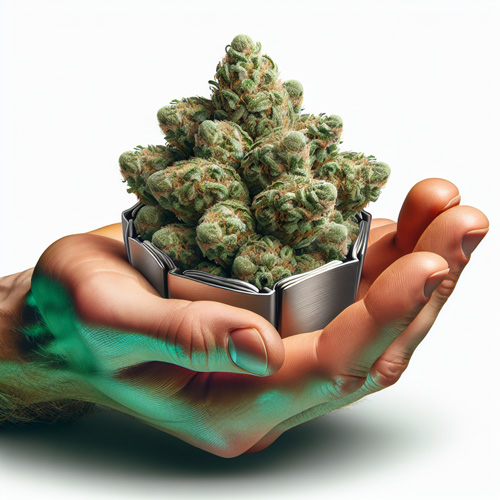
Hemp’s Role Throughout Human History
Hemp, a versatile and durable plant, has played a significant role throughout human history. From ancient civilizations to the modern era, hemp has been cultivated and utilized in a myriad of ways. This plant, scientifically known as Cannabis sativa, holds immense historical, cultural, and economic importance. Let’s delve into the rich history of hemp and explore its far-reaching impact on human civilization.
Role in Ancient Civilizations:
Hemp has a profound presence in the annals of human history, reaching back to ancient times. Greek historian Herodotus chronicled hemp’s cultivation as early as the 5th century BCE. Ancient Chinese and Indian civilizations revered hemp for its uses in fabric production, rope-making, and as a medicinal herb. Hemp clothing was widely worn, not only for its durability but also for its hypoallergenic and breathable nature. In fact, hemp fiber found in ancient tombs further substantiates its role in textile production.
Hemp’s Influence in Western History:
Even in the Western world, hemp played a pivotal role. Hemp cultivation was encouraged by notable figures like George Washington and Thomas Jefferson, who recognized its value in building materials, textiles, and even as a cash crop. In the 16th and 19th centuries, Europe saw a surge in hemp production for industrial purposes, particularly in the manufacturing of paper and rope. The British monarch Henry VIII even mandated the cultivation of hemp to maintain a strong navy. With such widespread use and demand, hemp farmers thrived, contributing to the growth of the industry.
Medicinal and Environmental Benefits:
Beyond its industrial applications, hemp is lauded for its medicinal properties and health benefits. As early as the 21st century BCE, ancient Chinese records mention hemp’s use in pain relief and treating various ailments. Indian hemp, a variety of Cannabis sativa, found its place in Ayurvedic medicine. Today, scientific research continues to explore the therapeutic potential of hemp-derived compounds. Furthermore, hemp cultivation offers environmental advantages, such as soil rejuvenation, efficient water usage, and reduced reliance on pesticides.
Throughout human history, hemp has played a major role in shaping societies, economies, and cultures. From ancient civilizations that relied on hemp for everything from fabric to medicine, to renowned figures like George Washington and Henry VIII who understood its economic significance, hemp has woven itself into the tapestry of human civilization.
As we delve deeper into the 21st century, the potential for hemp continues to expand, with its environmental benefits and versatile applications capturing the attention of industries and consumers alike. With a rich history spanning millennia, it is no wonder that the humble hemp plant continues to make its mark in the modern world.
The Impact on Ancient Civilizations
Hemp, with its multitude of uses, played a significant role in the ancient civilizations of Egypt, China, Greece, and Rome. These civilizations recognized the value of hemp for both its industrial applications and its medicinal benefits.
In terms of industrial uses, hemp was highly valued for its fibers, which were used to make textiles and rope. The strong and durable nature of hemp fibers made them ideal for creating clothing and accessories. Additionally, hemp fibers were utilized in the construction of buildings, providing a renewable and sustainable alternative to other materials.
But it wasn’t just its industrial uses that made hemp important in ancient civilizations. Hemp was also highly regarded for its medicinal properties. Ancient records from China and other ancient civilizations mention hemp being used to treat various illnesses and ailments. In particular, Emperor Shen Nung, a mythical figure in ancient China, recommended hemp for over 100 different ailments. He recognized the medicinal benefits of hemp and its ability to balance the body’s yin and yang energies.
The impact of hemp on ancient civilizations cannot be understated. It provided a reliable source of raw materials for various industries and contributed to the overall well-being and health of the people. Today, we continue to uncover the countless benefits of hemp and its potential for various industries and medicinal purposes.
Early Uses of Hemp
In ancient civilizations, hemp played a major role in various aspects of human civilization. From the cultivation of hemp as an agricultural crop to the utilization of its fibers for making textiles and rope, hemp was an integral part of early societies. The history of hemp can be traced back thousands of years, with evidence of its cultivation found in ancient China, Egypt, and other regions. The use of hemp for medicinal purposes was also prevalent, with ancient records documenting its effectiveness in treating a wide range of ailments. As we delve into the early uses of hemp, we gain a deeper understanding of its significance in shaping human history and the countless benefits it provided to ancient societies.
Building Materials and Industrial Purposes
Hemp has played a major role in human civilization for thousands of years, particularly in the realm of building materials and industrial purposes. This versatile crop has been used to create a wide range of products due to its strong and durable hemp fiber, as well as its nutritious and oil-rich hemp seeds.
In ancient times, hemp fibers were utilized in the production of various textiles, including clothing, carpets, and nets. The fibers were also woven into ropes and hemp cords, which were essential for a multitude of purposes, such as shipbuilding and construction. Even hot stones were wrapped in hemp to make steam baths. The strong and flexible nature of hemp fibers made them ideal for these applications.
Additionally, hemp has been used to manufacture paper. In fact, the earliest known paper was made from hemp fibers nearly 2,000 years ago. Hempen paper was widely used throughout history, from ancient civilizations like the Chinese and Egyptians, to more recent figures like George Washington and Thomas Jefferson. Hemp paper is known for its longevity and durability.
Furthermore, hemp has been utilized in the construction industry to create building materials such as bricks, insulation, and composite boards. These materials are lightweight, biodegradable, and possess excellent thermal and acoustic properties. Additionally, hempcrete, a mixture of hemp fibers, lime, and water, has become increasingly popular for its sustainability and energy-efficient qualities.
The use of hemp as a building material and for industrial purposes offers numerous environmental benefits. Hemp cultivation requires less water, pesticides, and herbicides compared to other crops. It also absorbs large amounts of carbon dioxide from the atmosphere, helping to combat climate change. Additionally, hemp crops provide a sustainable alternative to deforestation for the production of paper and wood-based building materials.
Hemp’s history in building materials and industrial purposes is extensive. From its versatile fibers used in textiles, ropes, and paper, to its sustainable and innovative use as a building material, hemp continues to prove its value. With its environmental benefits and numerous applications, the future of hemp in the 21st century looks promising.
Textiles and Cordage
Hemp has played a crucial role in the development of textiles and cordage since ancient times. One of the earliest civilizations to utilize hemp for fabric was ancient China, where it was the dominant cloth before the introduction of cotton.
To create hemp fabric, the process starts with the extraction of the bast fiber from the hemp plant. The fibers are then spun into yarn, which is later woven into cloth. Hemp fibers are known for their fine and strong nature, making them ideal for producing durable and long-lasting textiles.
The archaeological evidence of hemp textiles and cordage highlights the advanced agricultural tools and techniques employed by ancient civilizations. Hemp rope has been found in tombs, indicating its use in various applications, from shipbuilding to household use. Additionally, burial cloth made from hemp has been discovered, showcasing the versatility and importance of hemp in ancient societies.
The use of hemp in textiles and cordage has played a vital role in the progress of human civilizations. Its strength, durability, and versatility have made it a valuable resource. From the spinning of yarn to the weaving of cloth, hemp has been an integral part of ancient textile production, providing societies with essential materials for clothing, ropes, and other fabric-based needs.
Psychoactive Compound Use
Psychoactive compounds derived from cannabis have been used for centuries in ancient civilizations. The historical use of cannabis as a psychoactive substance can be traced back to ancient times, where it played a significant role in various cultures. The mention of cannabis and its effects can even be found in classical texts, such as Homer’s Odyssey and the writings of the Greek historian Herodotus.
In Homer’s Odyssey, cannabis is referred to as a “wonder plant” with mystical properties. Herodotus, known as the “father of history,” documented the use of cannabis by the ancient Scythians. He described how the Scythians would throw hemp seeds onto hot stones, creating a fragrant smoke that they inhaled during burial rituals.
These accounts provide valuable insights into the cultural and medicinal use of cannabis in ancient civilizations. The psychoactive compounds found in cannabis played a major role in religious and ceremonial practices, offering individuals a spiritual experience and altered state of consciousness.
The use of cannabis as a psychoactive compound is deeply rooted in human history. From the writings of ancient scholars to the rituals of burial, cannabis has left a lasting impact on the cultures of the past. Its rich history and significance in ancient civilizations continue to intrigue and fascinate researchers and historians to this day.
Ancient Evidence of Hemp Cultivation
Hemp, also known as cannabis sativa, has a long and rich history that dates back thousands of years. In fact, there is evidence to suggest that hemp cultivation was prominent in ancient civilizations.
Greek historian Herodotus documented the use of cannabis by the Scythians, a nomadic people around the 5th century BC. They cultivated hemp and used its fibers to make clothes, ropes, and other materials. Some accounts even mention that they used hemp seeds for medicinal purposes. Additionally, there are records of hemp cultivation in ancient China, where it was also used for its fibers and seeds.
The cultivation of hemp played a significant role in the early development of human civilization, providing raw materials for various industries like textiles, paper, and building materials. Its versatility, environmental benefits, and health properties continue to make hemp an important agricultural crop in the 21st century.
Greek Historian Herodotus
Greek Historian Herodotus played a significant role in shedding light on the importance of hemp in early civilizations. His writings and observations have provided valuable insights into hemp cultivation and its various uses in ancient societies.
Herodotus, often referred to as the “Father of History,” extensively documented the practices of ancient civilizations, including the cultivation of hemp. He observed that hemp was grown as an agricultural crop and its fibers were used to produce various materials. Hemp fabric was widely used for clothing, ropes, and even building materials.
Beyond its practical applications, Herodotus recognized the economic and cultural significance of hemp in ancient societies. Hemp cultivation played a major role in the economies of these civilizations, providing raw materials for industries such as papermaking and textiles. Additionally, hemp played a crucial role in religious and cultural practices, with Herodotus noting that it was used in rituals and ceremonies.
Thanks to Herodotus’ observations, we have a comprehensive understanding of the role hemp played in the development and prosperity of ancient civilizations. His writings highlight the economic and cultural value placed on hemp, revealing its importance in various aspects of human civilization.
Greek Historian Herodotus’s documentation of hemp cultivation and its diverse uses provides us with valuable insights into the economic and cultural significance of hemp in ancient societies. His works demonstrate the major role that hemp played in the development and prosperity of these civilizations.
5th Century Chinese Texts
The 5th Century Chinese Texts provide valuable insights into the role of hemp in early civilizations, shedding light on its various uses and cultural significance. These ancient texts were instrumental in expanding our understanding of hemp’s properties and cultivation practices.
One of the significant discoveries in these texts was the Chinese understanding of hemp’s sexuality. They recognized the distinction between male and female hemp plants, an essential factor in cultivating hemp for its fibers and seeds. This discovery contributed to the development of more efficient cultivation techniques.
The texts also revealed that hemp was cultivated not only for its fibers but also for its psychoactive properties. Ancient Chinese civilizations recognized the potential of hemp for medicinal and recreational purposes. They developed techniques to enhance the potency of hemp strains, allowing them to use it for its therapeutic effects.
These 5th Century Chinese Texts offer crucial evidence of the early civilizations’ deep involvement with hemp. They provide us with valuable details regarding hemp’s cultivation, its uses in both fiber production and psychoactive properties. By uncovering these ancient texts, we gain a broader perspective on hemp’s role in the development and prosperity of early civilizations.
Archaeological Findings in Europe and Asia
Archaeological findings from Europe and Asia provide valuable insights into the cultivation and use of hemp in ancient civilizations. In Europe, evidence of hemp cultivation dates back to the Neolithic period, with remnants of hemp fibers found in pottery and textile fragments. These findings suggest that hemp was utilized for its fibers in the production of clothing and other goods.
In Asia, specifically in China, hemp played a significant role in early civilizations. Archaeological excavations have revealed hemp seeds and fibers in burial sites dating back thousands of years. These findings highlight the long-standing tradition of hemp cultivation in the region. Additionally, Chinese texts from as early as the 5th century BCE mention the various uses of hemp, including its medicinal properties and its role in making paper.
The presence of artifacts such as hemp cordage and clothing, as well as written records detailing hemp’s cultivation and applications, further support its significance in both Europe and Asia. For example, documents from ancient Greece illustrate the widespread use of hemp fibers in the construction of buildings and ships. In Asia, legendary ruler Emperor Shennong is said to have made clothing from hemp fibers. Historical evidence thus showcases the widespread cultivation and utilization of hemp in these regions.
Archaeological findings in Europe and Asia, along with written records, emphasize the role of hemp in ancient civilizations. These valuable discoveries shed light on hemp’s versatile applications, ranging from textiles to medicinal purposes, and highlight its long history of cultivation and use in Europe and Asia.
Expansion of Hemp Cultivation in the 20th Century
The 20th century marked a significant turning point in the cultivation of hemp. After experiencing a decline in production due to the rise of synthetic fibers and the criminalization of cannabis in the early part of the century, hemp made a comeback in the later years.
In the United States, influential figures like George Washington and Thomas Jefferson actively promoted hemp as an agricultural crop, recognizing its versatility and economic benefits. However, it wasn’t until the mid-20th century that hemp production began to flourish once again.
The renewed interest in hemp was fueled by its valuable raw materials, such as hemp fiber for textiles, building materials, and paper. The environmental benefits of hemp, including its ability to grow rapidly and without the need for excessive pesticides or fertilizers, also played a role in its expanded cultivation.
In the 21st century, hemp continues to be widely recognized for its versatility and the numerous benefits it offers as an agricultural crop.
George Washington and Thomas Jefferson’s Involvement
George Washington and Thomas Jefferson were two prominent figures in early American history who played a significant role in the cultivation of hemp during the 19th century. Both Washington and Jefferson recognized the economic potential of hemp as an agricultural crop and actively promoted its growth in the early United States.
George Washington, the first President of the United States, was a strong advocate for hemp cultivation. He grew hemp on his Mount Vernon estate in Virginia and encouraged other farmers to do the same. Washington saw hemp as a valuable crop that could provide raw materials for various industrial purposes, such as rope, clothing, and paper.
Thomas Jefferson, the third President of the United States, also recognized the importance of hemp cultivation. He believed that hemp could be a profitable cash crop for American farmers and saw it as a strategic crop for the country’s independence. Jefferson even developed his own hemp processing machinery to enhance the efficiency of hemp production.
Together, Washington and Jefferson’s efforts helped establish hemp as a valuable industry in the early United States. Their promotion of hemp cultivation as an agricultural crop contributed to its economic importance and helped fuel the nation’s early industrial development. Their involvement in hemp cultivation and the recognition of its economic potential demonstrate their foresight and dedication to supporting the growth of the young nation.
The Rise of the Industrial Hemp Industry
The rise of the industrial hemp industry can be traced back to ancient civilizations. Hemp, derived from the cannabis plant (Cannabis sativa), has been cultivated for thousands of years and played a major role in human civilization.
In ancient times, hemp was primarily grown for its fiber, which was used to make ropes, clothing, and building materials. Historians believe that hemp cultivation began as early as the 5th century BC, with references to hemp clothing found in Chinese texts. Greek historian Herodotus also mentioned the cultivation of hemp in ancient societies.
In more modern history, notable figures such as George Washington and Thomas Jefferson recognized the value of hemp cultivation. Washington, in particular, grew hemp on his Mount Vernon estate and encouraged other farmers to do the same. He believed that hemp could provide raw materials for various industrial purposes and saw it as a profitable cash crop.
During the 19th and 20th centuries, hemp production saw a decline due to various factors, including the anti-cannabis sentiment and the introduction of synthetic fibers. However, recent decades have seen a resurgence in hemp cultivation, largely driven by a shift in public perception and the recognition of its environmental benefits.
Technological advancements in processing and manufacturing have also contributed to the growth of the hemp industry. Methods for extracting hemp fiber and producing hemp paper have improved, allowing for greater efficiency and quality in the production process.
Today, the hemp industry continues to expand, with a focus on not just fiber, but also other valuable components such as hemp seeds and hemp seed oil. Hemp is now seen as a versatile agricultural crop with numerous applications, ranging from textiles to health supplements. With more research into its health benefits and ongoing legalization efforts, the industrial hemp industry is expected to thrive in the 21st century and beyond.
Modern Day Uses for Hemp Plant Products
Hemp, a versatile and sustainable plant, has found a multitude of uses in modern times. One of its most well-known applications is in the production of hemp paper.
Made from the fibrous stalks of the hemp plant, hemp paper is not only durable but also more environmentally friendly compared to traditional paper made from trees. Industrial hemp is also cultivated for its seeds, which are rich in essential fatty acids and proteins.
These seeds are used to produce hemp seed oil, a nutritious and plant-based alternative to traditional cooking oils. Additionally, hemp fiber continues to be in high demand, with applications ranging from textiles and clothing to building materials.
With growing awareness of its numerous benefits, including its potential as a renewable resource and its positive impact on the environment, the hemp industry is experiencing a resurgence in the 21st century.
Agricultural Crop Production and Raw Material Extraction
Hemp has been cultivated as an agricultural crop for thousands of years, dating back to ancient civilizations. The production of industrial hemp involves the careful cultivation of the cannabis plant, specifically Cannabis sativa. Historically, hemp has been grown for its versatile fibers, which are extracted from the plant’s stalks. These fibers have been used to create a wide range of products, including paper, textiles, and building materials.
The extraction of raw materials from hemp involves a process called retting, where the stalks are soaked and left to decompose, breaking down the tough fibers. These fibers are then separated and processed further to make them suitable for various applications. In addition to the fibers, hemp seeds, which can be used for their oil, are also harvested from the plant.
Hemp has played a major role in human civilization due to its many uses and benefits. It is a renewable resource, as the crop can be grown year after year, without depleting the soil. Furthermore, hemp is known for its environmental friendliness, as it requires less water and pesticides compared to other crops.
The versatility and sustainability of hemp make it an ideal choice for various industries. Hemp fibers can be used to create strong and durable ropes, fabrics, and even construction materials. Hemp seeds, on the other hand, are packed with nutrients and can be used to produce nutritious oils and food products.
The production of hemp offers potential economic opportunities, particularly in the rapidly growing hemp industry. However, there are also challenges associated with hemp cultivation, such as legal restrictions and the lack of infrastructure for processing and distribution.
Overall, hemp’s agricultural crop production and raw material extraction have made it an essential resource throughout history. Its versatility, sustainability, and environmental benefits make it a valuable asset in the 21st century and beyond.



































/5Total reviews
Persons recommended this product
Filter by
star Rating
attach_file Attachments
Anonymous
Shopper
check_circle Verified
Shop owner replied
Was this helpful
Facebook
X (Twitter)
LinkedIn
Reddit
Copied to Clipboard
Anonymous
Shopper
check_circle Verified
Shop owner replied
Was this helpful
Facebook
X (Twitter)
LinkedIn
Reddit
Copy Link
Thanks for your review!
Your feedback helps us improve our service.
There are no reviews yet.
Be the first to review “ ”
Only logged in customers who have purchased this product may leave a review